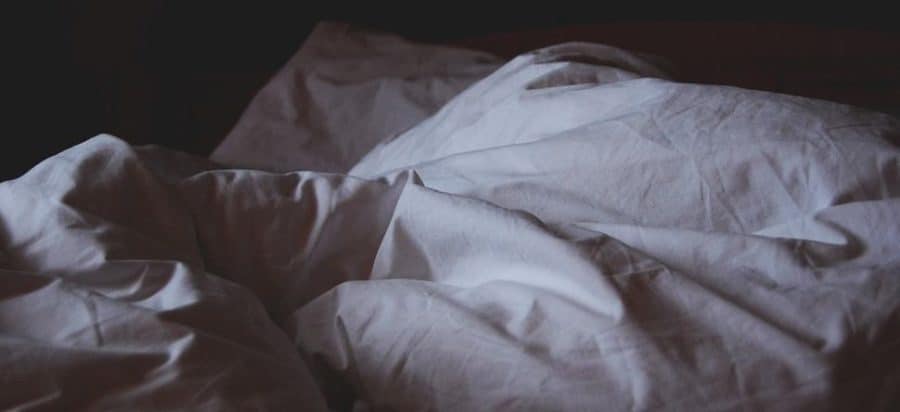For the millions of older adults who lie awake counting sheep, the solution to better sleep might not be found in a pill bottle but in the weight room, according to new research.
A comprehensive analysis published March 4 in Family Medicine and Community Health found that resistance or muscle strengthening exercises significantly outperformed other types of physical activity in improving sleep quality for adults over 60 suffering from insomnia.
The study comes at a critical time when sleep problems affect up to 20% of older adults, contributing not just to daytime fatigue but to a cascade of serious health complications including cognitive decline, depression, and increased risk of cardiovascular disease.
Researchers scoured global databases for clinical trials comparing different exercise types for older insomniacs, eventually analyzing 24 studies involving more than 2,000 adults with an average age of 70. Using a statistical method called network meta-analysis, they were able to compare multiple exercise approaches simultaneously – something individual studies can’t accomplish.
“Exercise, particularly strengthening exercise and aerobic exercise, is beneficial for enhancing subjective sleep quality at a clinically significant level compared with normal activities,” the researchers concluded after examining how different workout types affected participants’ sleep quality scores.
Muscle strengthening activities – like using weights, doing push-ups or planks – improved sleep quality scores by an impressive 5.75 points on the Pittsburgh Sleep Quality Index (PSQI), a standardized measurement tool where a 3-point improvement is considered clinically meaningful. This performance substantially outpaced aerobic exercise (3.76-point improvement) and combination exercise programs (2.54-point improvement).
Dr. Anna Chen, a geriatric sleep specialist not involved in the research, sees these findings as potentially transformative for clinical practice. “What’s particularly valuable about this study is that it gives clinicians clear guidance on which type of exercise to recommend,” she explained. “Many doctors recognize exercise helps sleep, but haven’t had evidence about which specific type works best.”
Most of the exercise programs studied involved mild to moderate intensity activity for about 50 minutes per session, typically two or three times weekly. On average, the programs lasted 14 weeks – suggesting that sleep benefits weren’t immediate but developed over consistent practice.
The results challenge the common perception that gentle aerobic activities like walking or swimming should be the go-to exercise recommendation for older adults with sleep problems. While these activities did improve sleep, strength training showed superior effects.
This finding echoes recent shifts in physical activity guidelines for seniors, which increasingly emphasize the importance of muscle strengthening. The American College of Sports Medicine now recommends adults over 65 perform strength training at least twice weekly – advice many sleep physicians may now have additional reason to emphasize.
For 72-year-old Marie Houlihan, who has struggled with insomnia for a decade, the findings resonate with her personal experience. “I’ve tried everything from meditation to melatonin,” she shared. “Last year my doctor suggested I join a strength training class at my community center. After about two months, I noticed I was falling asleep faster and waking up less during the night.”
Sleep medication use among older adults has been a significant concern in geriatric medicine. Hypnotic medications carry heightened risks for seniors due to their longer half-life in aging bodies, increasing the chances of falls, confusion, and other adverse effects.
While cognitive behavioral therapy for insomnia (CBT-I) remains the first-line non-drug treatment, it faces practical hurdles in widespread implementation. “CBT-I is seldom used in clinical settings owing to time and lack of qualified therapists,” the researchers noted, highlighting why accessible interventions like exercise are particularly valuable for this population.
The study did have limitations. The researchers caution that the design and methodology of the included studies varied considerably, and several didn’t include information on exercise intensity. Additionally, some exercises may prove challenging for older people with restricted physical capabilities.
Dr. James Wilson, a sleep medicine specialist at University Medical Center, suggests starting slowly with professional guidance. “These results don’t mean every 80-year-old should immediately start bench pressing,” he advised. “But incorporating gentle, progressive resistance training – even using resistance bands or body weight exercises – could significantly improve sleep quality while offering numerous other health benefits.”
For those already taking sleep medications, experts recommend consulting healthcare providers before making changes to their regimen. Exercise should complement, not necessarily replace, current treatments.
As our population ages globally and sleep problems become increasingly prevalent, these findings offer a practical, low-cost intervention that addresses not just insomnia, but potentially contributes to overall health and independence – helping older adults maintain quality of life well into their later years.
The researchers hope these findings will influence how healthcare providers approach sleep problems in older patients. Rather than defaulting to medication or general advice to “be more active,” the evidence now suggests specific guidance toward strength training might be the most effective path to better sleep – proving that when it comes to tackling insomnia in older age, it may be time to pump a little iron for better Z’s.
If our reporting has informed or inspired you, please consider making a donation. Every contribution, no matter the size, empowers us to continue delivering accurate, engaging, and trustworthy science and medical news. Independent journalism requires time, effort, and resources—your support ensures we can keep uncovering the stories that matter most to you.
Join us in making knowledge accessible and impactful. Thank you for standing with us!

